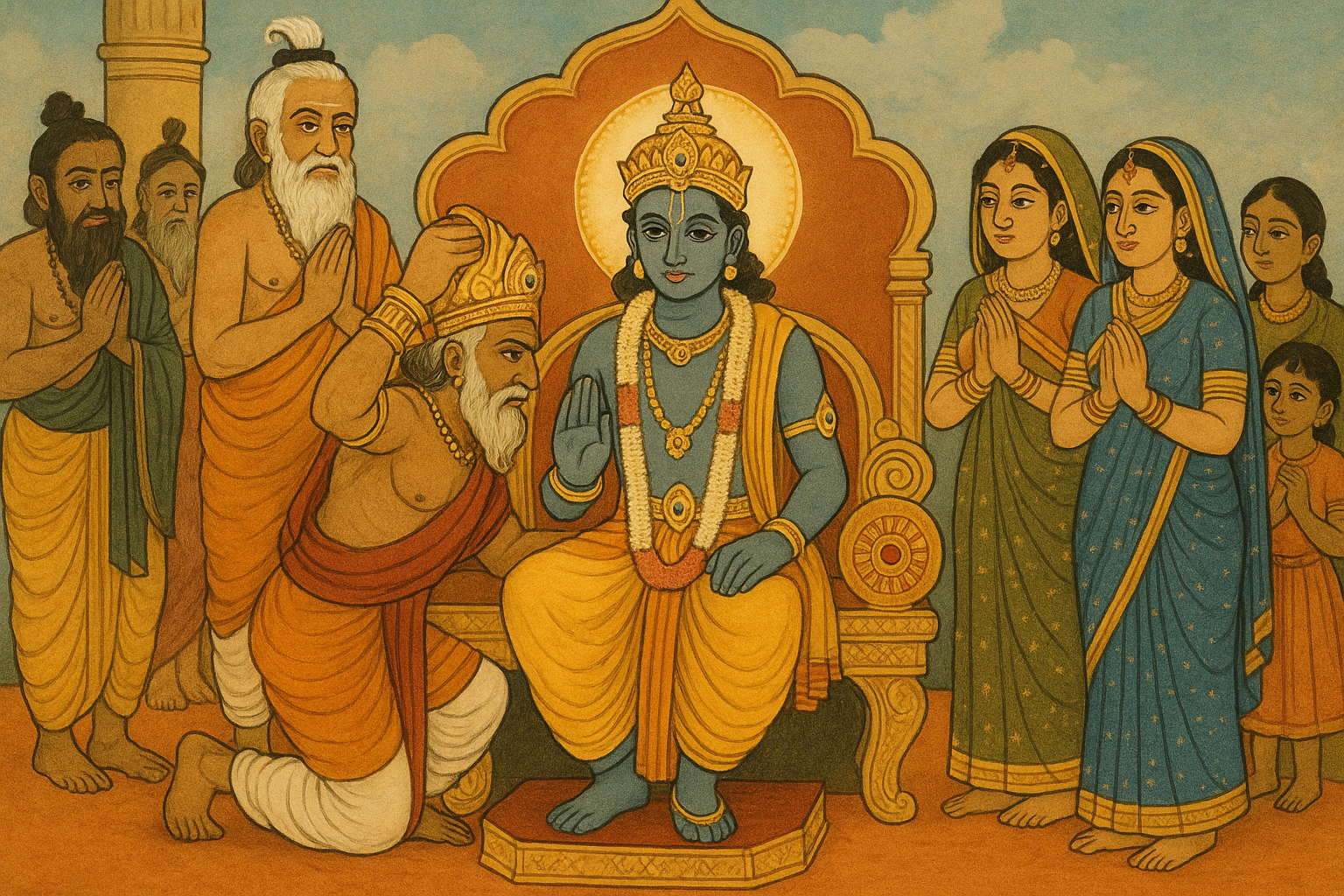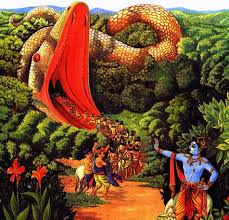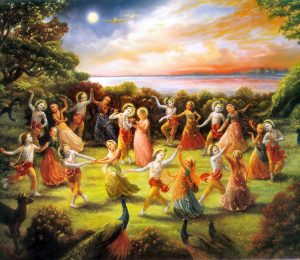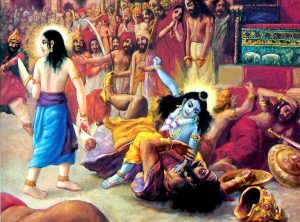After the Fall of Dvārakā
With the tragic self-destruction of the Yādava dynasty and the disappearance of Lord Kṛṣṇa and Balarāma, the world stood at the edge of a new age. The Dvāpara-yuga was ending, and the Kali-yuga was about to begin.
Arjuna, overcome with sorrow and weakened by separation from Kṛṣṇa, returned to Hastināpura with the surviving women and children. He had lost his celestial prowess, not because of age or failure, but because Kṛṣṇa, the source of all his strength, had withdrawn His visible presence.
Yet, even in the darkness of this loss, a ray of hope remained—Vajra, the grandson of Kṛṣṇa through His son Aniruddha.
Vajra, the Torchbearer of the Yādava Legacy
Vajra was noble, brave, and spiritually inclined. Though still young, he had inherited the qualities of his grandfather Kṛṣṇa—compassion, strength, and devotion to dharma. The surviving Yādavas and Pāṇḍavas gathered to decide the future of the dynasty.
The sages and elders declared:
“Let Vajra, the descendant of Kṛṣṇa, be crowned king! Let him uphold the legacy of righteousness!”
Arjuna joyfully installed Vajra on the throne, not in Dvārakā, which had been submerged by the ocean, but in Indraprastha, which became the new seat of the Yādava lineage.
Reestablishing Dharma in the New Age
Under Vajra’s rule, the traditions of Vaiṣṇava worship and the glories of Kṛṣṇa’s pastimes were preserved. He constructed new temples, cared for the brāhmaṇas, protected the people, and kept alive the memory of his grandfather’s divine life.
Though Kali-yuga had begun—with its signs of quarrel, degradation, and spiritual decline—Vajra stood as a guardian of devotion, reminding the world of Kṛṣṇa’s eternal presence.
The sages, such as Nārada and Vyāsa, guided Vajra and inspired him to establish murti-sevā (Deity worship) in many places.
Among the famous deities established by Vajra were:
- Śrī Govinda-deva, the eternal cowherd Lord.
- Śrī Gopīnātha, the lover of the gopīs.
- Śrī Madana-mohana, the attractor of even Cupid.
These deities became central to devotional life in the coming ages, continuing the intimate connection between Kṛṣṇa and His devotees.
The Eternal Legacy
Though the Yādava dynasty had collapsed in the visible world, its spiritual lineage continued through Vajra. The tales of Kṛṣṇa’s heroism, love, and teachings were preserved and passed on to generations through śravaṇa (hearing), kīrtana (chanting), and smaraṇa (remembrance).
“The Lord may withdraw His form, but never His grace.”
Through the actions of Vajra, Kṛṣṇa’s name remained vibrant on the tongues of sages and kings, farmers and poets.
Lessons to Be Learned:
- Even in the midst of loss, the Lord plants a seed of renewal.
- The strength of a dynasty is not in numbers, but in devotion and righteousness.
- Vajra teaches us that the future belongs to those who preserve dharma and remain devoted to the Supreme.
- When all seems lost, faith, remembrance, and service to the Lord continue the divine mission.
- Murti worship, started in earnest by Vajra, is a powerful way for future generations to connect with Kṛṣṇa.
Origin of the Story: Harivaṁśa Purāṇa – Bhaviṣya-parva, Chapters 16–22



